Organization of ventilation of the pool: the best methods of organizing air exchange
Neglect of the device of ventilation systems in pools invariably leads to an increase in humidity, the appearance of fungus and the creation of an unfavorable microclimate in the room. The accumulation of condensate damages the finish and destroys the structural elements of the building.
Agree, the prospect of premature overhaul will not please anyone. Thoughtful ventilation of the pool will help to prevent the negative impact of high humidity - the system provides air exchange within the sanitary standards.
The organization of ventilation must be addressed at the design stage of the room. In the article, we examined typical schemes for arranging a ventilation system for indoor swimming pools, described effective methods of controlling humidity, and made recommendations on the development of the project and the choice of climate equipment.
The content of the article:
Features of pool exchange
During the construction of swimming pools for public and private purposes, sometimes they do not pay due attention to the ventilation of halls, considering them non-residential premises.
However, it is there that without proper arrangement, malicious fauna and flora are born, which pose a real threat to practically unprotected organisms of bathers and swimmers.
Proper organization of pool ventilation and air exchange radically solves a number of operational problems that arise in such structures. The purpose of indoor swimming pool air exchange devices is to maintain humidity within the permissible established norms.
Specialized equipment removes excess moisture and promotes the flow of fresh air, while creating good conditions for visitors. The task is complicated by the need to organize a microclimate that is comfortable for being naked in the pool.

The ventilation of the pool premises has two main functions:
- maintaining optimal moisture readings;
- ensuring air exchange in accordance with sanitary standards.
The open surface of the water and wet running tracks evaporate water vapor, significantly increasing humidity. In a room with high humidity, a person is not comfortable, he feels excessive stuffiness and tiresome severity.
The polluted air of the pool with micro-impurities of chlorine from water and carbon dioxide exhaled by visitors also has a negative effect.

Designing a private house pool
In modern housing construction, the construction of indoor swimming pools has recently become very popular. The pool in the cottage or private house is arranged according to an individually prepared project.
Most often, a room is given for him on the ground floor. Preference is given to options with a water surface area of 18-50 m2 and a depth of approximately 1.2 to 2.0 m. Along the perimeter of the tank, tracks and places for rest are arranged. The main requirement for private pool projects is the safety and comfort of people.
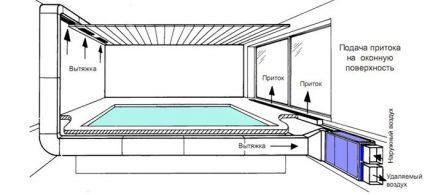
Such pools are most often designed for 2-5 people. According to the method of use, a private pool can be permanent or seasonal. If the pool tank is not used, it is closed with a special design.
The following operating parameters are recommended for a private swimming pool:
- water temperature + 26-29 ° С;
- air temperature + 27-32 ° С;
- the value of relative humidity in the summer is 65%;
- the value of relative humidity in the winter is 50%;
- air mobility of about 0.2 m / s.
To prevent stagnation of air in the pool hall, the capacity of the exhaust unit must exceed the capacity of the supply units by half a multiple exchange.
In order for the ventilation system to fulfill its purpose, it is built, taking into account the dimensions of the room, the area, the expected temperature, the number of people and the rate of evaporation of moisture.
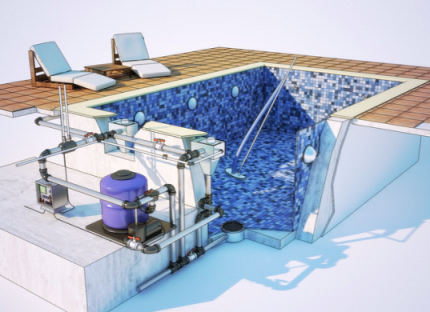
The design of the private pool is carried out in accordance with the developed standards SNiP 2.08.02–89 of the joint venture “Design of pools”.
The ventilation design sequence is as follows:
- Calculation of moisture and heat loss.
- The choice of ventilation and drainage.
- Calculation of the estimated air exchange.
- Selection of equipment and duct routing.
- Aerodynamic and hydraulic calculations.
- Design drawings.
- Drawing up specifications for equipment and materials.
Given the above parameters, the selection of equipment of the required capacity is carried out. In case of incorrect organization of the ventilation system, condensation will form on all horizontal and vertical structures of the pool free of water.
The result of the formation of condensate will provoke rotting of wooden elements, metal corrosion and the formation of mold on the surface and in the seams between the cladding elements.
Project preparation ensures accurate and coordinated installation and provides information for the correct operation of the pool. If errors are made during the installation of ventilation, there is always the opportunity to make the correct recalculation and installation of the system.

Moisture Control Methods
The method of regulation and control of humidity indicators is to drain the entire volume of the indoor air of the pool through the supply and exhaust ventilation device, install an air dryer, or a combination of these two systems.
Method # 1 - Using Air Dryers
The problem of increased humidity in the pool is partially solved by means of special dehumidifiers. The selection of this equipment is carried out according to the volume of the room. Dryers for 1 hour of operation pass three times the volume of humidified air mass in the room.
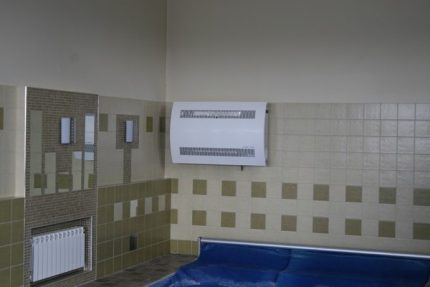
The selection of dehumidifiers is carried out according to the parameters necessary for this object. The effect of dehumidifiers is based on the condensation of water vapor. Some models are equipped with a fresh air intake device.
Desiccants according to purpose are divided into types:
- Household. These compact units remove moisture from small areas, are located on walls, floors or in a hidden way.
- Industrial. These are high-tech systems that handle large volumes of air.
According to the method of installation of the device, there are wall (floor) or channel mounted inside the ducts.
The use of wall-mounted dehumidifiers has not received much distribution due to the noise of the unit, the mismatch of design, significant cost and the need for maintenance. Channel-type dehumidifiers work more silently, do not distort the design, but have a decent cost.

Mostly existing drainage systems Do not supply fresh air to the room and do not clean the exhaust air.To solve the problem of increased humidity and air exchange of the pool by means of drainage devices is only possible partially.
It is possible to fully ensure the necessary level of pool humidity using dehumidifiers in combination with other types of ventilation.
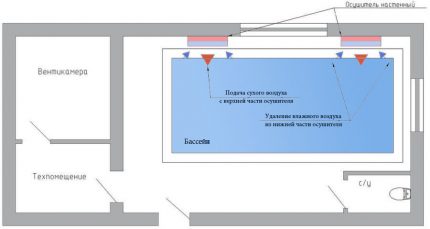
Method # 2 - organization of full ventilation
The most common way to maintain optimal values of humidity and air quality of the pool is the supply and exhaust ventilation. This system includes a ventilation unit, duct network and switchgears.
The ventilation unit in turn contains elements such as air filter, fan, heater, recuperator and automation system.
In very hot weather, air coolers and self-contained dehumidifiers are added to the system. Application air mass recovery in the ventilation system is economically feasible, as it makes it possible to use the removed air to heat the supply.
The forced ventilation system removes unpleasant odors that occur in the pool with high humidity. The installation of the supply and exhaust system is effective with a small pool area and not intensive use.
This ventilation method cannot guarantee the desired humidity level throughout the year. The system is ideal in winter, it replaces the wet air of the pool with dry air from the street.
In summer, atmospheric humidity is increased, so its movement by supply and exhaust ventilation in the pool does not give the desired effect.
Methods for organizing pool ventilation
It is almost impossible to prevent the evaporation of water from the water surface of the pool. You can slightly lower the level of humidity and reduce the cost of ventilation by using special impermeable coatings for the water surface.
If during operation reduce the water temperature and increase the air temperature, then the evaporation of water from the pool will decrease.
Also, excessive evaporation can be prevented without disturbing the supply and exhaust air flows. For the most effective air exchange and ventilation of pools, the most rational and efficient is the use of systems and equipment that are specialized for the needs of artificial reservoirs.
Supply and exhaust ventilation
Good ventilation in the pool room is provided by specially designed ventilation on the base forced-air and exhaust installations with recovery air. Such a system draws part of the air from the street and mixes it with part of the existing room.
After heating, the mixed air stream is delivered to the pool. By mixing in a fresh portion of a warm portion of air in the pool, energy is reduced to reach the required temperature.
With the help of the supply and exhaust circuit, the humidity is reduced to standard and unpleasant diffusion is eliminated. Thanks to the mixture of “street” air, the proportion of suspended particles that adversely affect the respiratory canals of people and overall health is reduced.
In supply and exhaust devices, oncoming flows never mix. Supply grilles are installed at different levels with exhaust suction.

Ventilation systems of this type are very effective in pools with a small area of a water mirror and not very intensive operation. The option is economical, but does not always guarantee a comfortable level of humidity.
The principle of the system is to exchange moist air from the pool to drier from the external environment. To save energy, the system is equipped with frequency controllers. With their help, reduced system performance, depending on the need for ventilation.
With the help of supply and exhaust systems, intensive air exchange is provided throughout the year, although in the summer period it is less effective due to increased atmospheric humidity. This method is able to drain the air in 98% of cases.
The advantage is the presence of optimal parameters, the ability to control performance, a large flow of fresh air and good energy efficiency. The disadvantages include the possibility of a short-term excess of the calculated humidity indicator in the summer period.
Combination of ventilation unit and dehumidifier
The use of air drying and the use of forced ventilation devices separately cannot guarantee the proper effect, therefore, in practice they are combined. By combining dehumidifiers with minimal air exchange of ventilation units, optimum humidity in the pool can easily be obtained.

Supply and exhaust ventilation devices are understaffed with wall or cassette dryers. Wall options are located in the pool room, and channel-type dehumidifiers are located in the utility rooms. It is advisable to use two drainage devices simultaneously.
In this case, ventilation is carried out in the following order: by means of a supply fan, air is supplied to a channel dehumidifier, mixed with recirculation, then it is drained and supplied to the room. Air is removed through an exhaust fan from the upper zone.
This forced type of air exchange with a dehumidifier is most suitable for use in private pools of cottages, in hotels or educational institutions. Duct dryers are used with a water mirror of more than 50 m2.
The advantage of the method is the minimum cost, ease of installation and operation. The disadvantage is the provision of only a sanitary-hygienic norm of fresh air, high room temperature, as well as increased energy consumption in summer.
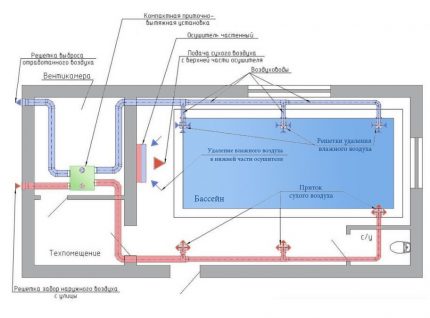
Symbiosis of ventilation, dehumidifier and air conditioning systems
The most energy-efficient method of reducing humidity in the pool is the installation of universal climate systems, which are a combination of elements for air drainage, ventilation and air conditioning.
In this case, the operation of supply and exhaust ventilation is standard. The system is supplemented by cooling sections and autonomous dehumidifiers.
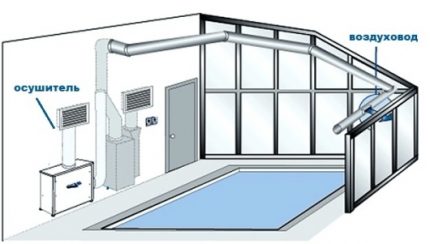
The main load falls on the supply and exhaust ventilation. With increased humidity and during peak periods, elements of drainage and air conditioning systems are included in the operation. In winter, humidity is controlled by a dehumidifier, and the ventilation system provides the necessary air exchange.
Today, consumers are offered high-tech units with the combination of all three functions, that is, ventilation, drainage, air conditioning. Such innovative plants are equipped with two-stage heat recovery units, integrated dehumidifiers with a heat pump and an integrated automation system.
The presence of automation allows you to choose the most optimal mode of air treatment. The advantage of the system is the availability of maximum energy efficiency and a guarantee of compliance with the required parameters of pool humidity all year round. The complex has a high initial cost.
Installation of climatic complexes
In pools with a water surface of more than 50 m2 modern climatic complexes are used for air exchange and ventilation. These multifunctional units are designed to maintain the microclimate in predetermined modes throughout the year.
They are capable of cleaning, draining and heating the air masses of the room. These modular units are delivered ready for installation.
The complex consists of the following elements:
- supply and exhaust fans;
- recuperator;
- desiccant;
- heater;
- filter;
- air valves;
- Control block.
The package bundle is individual and may vary according to customers preferences. Such a complex works in different modes.
Its sensors react to changes in air parameters and the unit automatically changes the operating mode to a more suitable one. Such climatic complexes differ in impressive dimensions, therefore, for their installation it is necessary to allocate a special room.
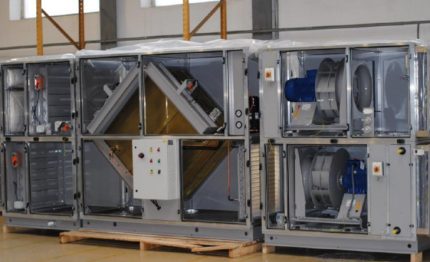
Such a powerful climate system is able to maintain the necessary microclimate in rooms with a large area.
The use of this climate complex can replace heating appliances, dehumidifiers, supply and exhaust systems in the entire room. Complexes of this type are often installed in cottages, private homes, medical and sports pools.
Conclusions and useful video on the topic
A clip about the device for supplying ventilation to the pool of a country house:
For safe and comfortable use of indoor swimming pools in private homes, first of all, it is necessary to maintain the necessary humidity and air exchange parameters. This is done by draining the air and organizing a quality ventilation system.
The selection of the most optimal method of air exchange is carried out individually in accordance with the technical parameters of the pool premises and personal priorities.
Have something to supplement, or have questions about the organization of ventilation of the pool? You can leave comments on the publication, participate in discussions and share your own experience in arranging the ventilation system. The contact form is located in the lower block.

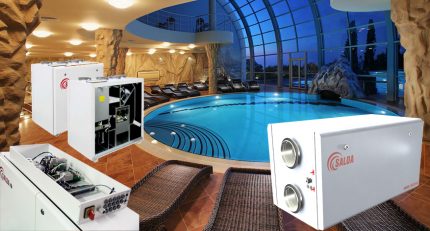
 Pool heat pump: selection criteria and installation rules
Pool heat pump: selection criteria and installation rules 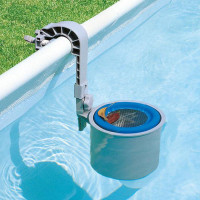 How to choose a filter for the pool: types of units and the rules for the right choice
How to choose a filter for the pool: types of units and the rules for the right choice  How to choose a pump for the pool: a comparative overview of different types of units
How to choose a pump for the pool: a comparative overview of different types of units 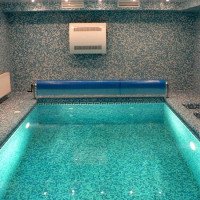 Dehumidifiers for pools: how to choose and calculate the optimal dehumidifier
Dehumidifiers for pools: how to choose and calculate the optimal dehumidifier  Do-it-yourself pool waterproofing: technology overview + step-by-step example of work
Do-it-yourself pool waterproofing: technology overview + step-by-step example of work  How to make a pool in the country with your own hands: the best options and master classes
How to make a pool in the country with your own hands: the best options and master classes  How much does it cost to connect gas to a private house: the price of organizing gas supply
How much does it cost to connect gas to a private house: the price of organizing gas supply  The best washing machines with dryer: model rating and customer tips
The best washing machines with dryer: model rating and customer tips  What is the color temperature of light and the nuances of choosing the temperature of the lamps to suit your needs
What is the color temperature of light and the nuances of choosing the temperature of the lamps to suit your needs  Replacement of a geyser in an apartment: replacement paperwork + basic norms and requirements
Replacement of a geyser in an apartment: replacement paperwork + basic norms and requirements
I have my own sauna, so I decided to install a swimming pool for convenience. For a long time I chose the best option for ventilation and settled on the supply and exhaust. Firstly, this method is very budget. Secondly, such ventilation saves energy with a power regulator. I have already had a swimming pool for two months, and the ventilation of the room is very good. So choose according to your needs.
It’s definitely not worth saving on ventilation in the pool, so we chose the installation of a climate system for ourselves, which includes air conditioning, a dehumidifier, and ventilation.And we didn’t regret it - the funds paid off handsomely for our health, well-being and optimal conditions in the room where the pool is located, although this room is not the largest.
We have installed supply and exhaust ventilation systems at more than 35 facilities. Pools from 15 to 120 m2. It works perfectly, the room is ventilated, drained, the air is fresh all year round!
It makes sense to use climate systems on large objects or on those where there is not enough heat to heat the air. In small private pools it is impractical due to the high cost of equipment - it pays off for a long time.